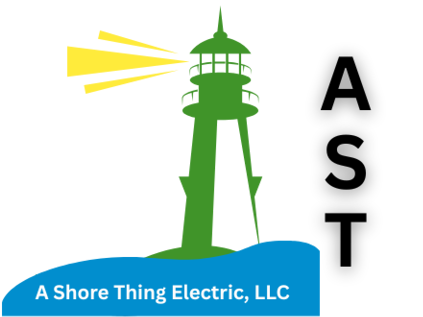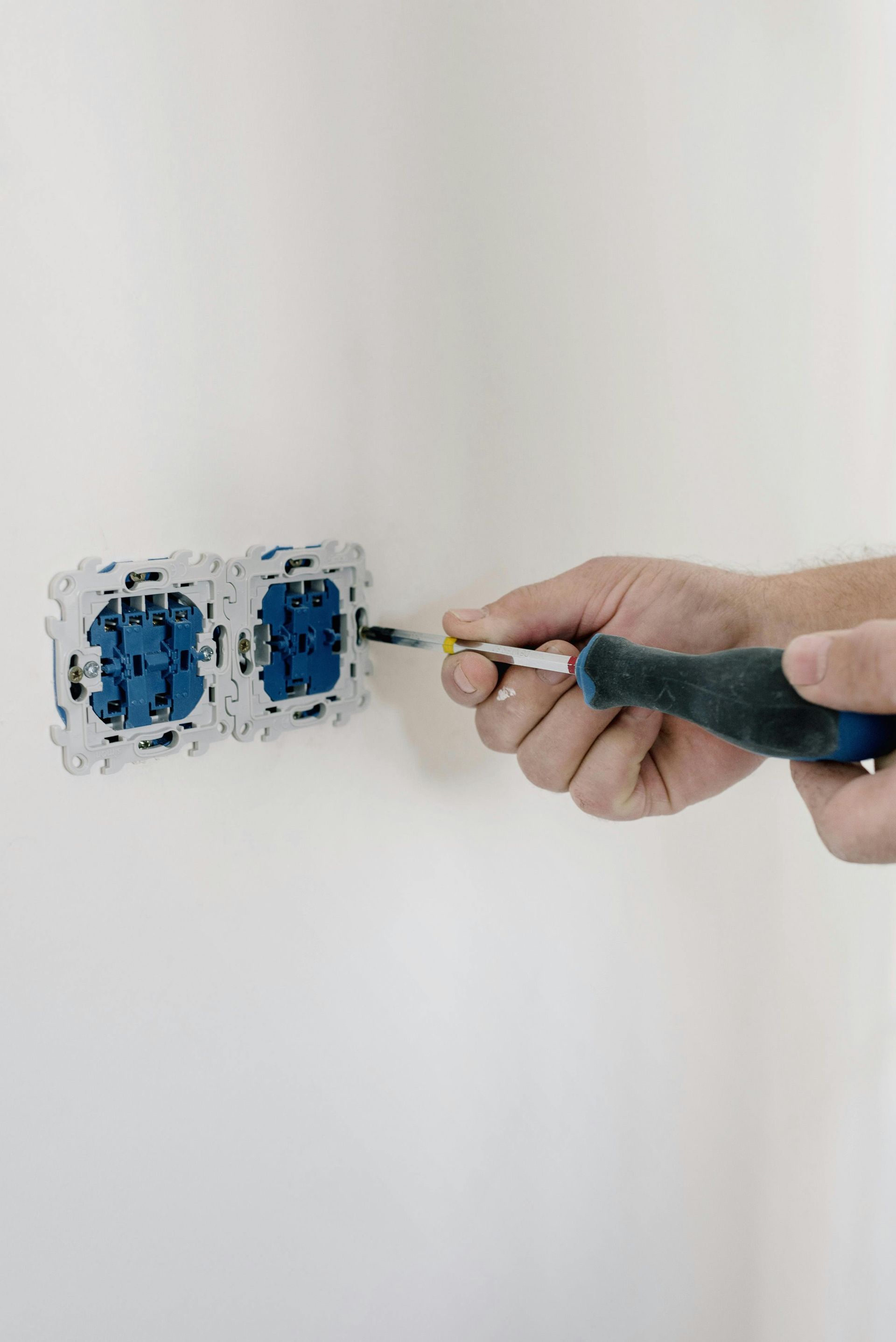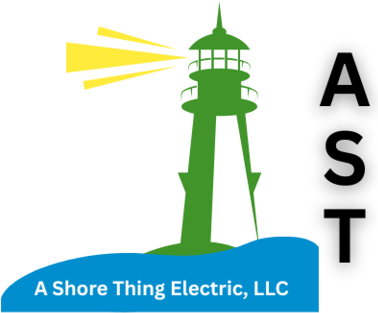How to Safely Use Extension Cords in Every Season
Using extension cords safely all year means picking the right type—heavy-duty for outdoors, light-duty for inside—checking them for damage before you plug in, and keeping them from getting tripped over or crushed. Outdoors? Use weatherproof cords and keep them dry. Don’t overload cords and avoid daisy-chaining; it’s like juggling too many balls at once. When not in use, coil them loosely and store in a cool, dry spot. For bigger wiring needs at home, consider professional residential electrical services instead of relying on multiple cords. Businesses should also think about proper setups with expert commercial electrical solutions. Want to keep your cords happy and hazard-free? There’s more smart tips ahead.
Key Takeaways
- Choose weatherproof, outdoor-rated cords for cold, wet, or sunny conditions to prevent damage and electrical hazards.
- Inspect cords regularly for fraying, cracks, or exposed wires before each season's use.
- Store cords coiled loosely in a dry, cool place during off-season to avoid moisture damage and kinks.
- Use GFCI outlets and keep cords off wet ground to enhance outdoor electrical safety.
- Avoid running cords under rugs or furniture to prevent overheating and fire risks in any season.
Choosing the Right Extension Cord for Your Needs
Picking the right extension cord might seem like a small thing, but it can make a big difference in keeping you and your devices safe. You’ve got lots of cord types to choose from, and knowing which one fits your usage scenarios helps avoid headaches later. For example, if you’re plugging in tools in the garage, you’ll want a heavy-duty cord made for outdoor use. On the other hand, a light-duty cord works fine for lamps or chargers inside your cozy living room.
Don’t forget about length, either — too short, and you’ll be stretching and straining; too long, and you risk tripping or tangled messes, which no one likes. It’s like picking shoes: you want the right fit for the occasion. When you match the cord type to your specific needs, you’re not just staying safe; you’re making life easier and more connected. And hey, that’s a win for everyone in your circle.
For homeowners planning renovations or expansions, it’s also smart to think about room additions electrical safety since adding new space often means new wiring needs.
Inspecting Extension Cords Before Use
Before you plug in, take a quick look at your extension cord for any frayed wires—that’s a red flag you don’t want to ignore. Make sure the plug isn’t cracked or loose, and check that the insulation is still smooth and intact. Trust me, a little inspection now can save you from a lot of hassle later!
Check for Frayed Wires
Since extension cords often get tossed around and stepped on, it’s smart to give them a good once-over for any frayed wires before you plug them in. A quick frayed wire inspection can save you from a nasty shock or a fire hazard. Think of it as simple cord maintenance tips that keep you and your space safe.
When you check your cords, look for:
- Exposed or cracked wires that might spark trouble
- Areas where the insulation feels thin or worn out
- Any weird bends or kinks that could hide damage
Taking a minute to spot these signs means you’re part of a safety-savvy crew who knows that a little care goes a long way. If you see similar problems in your home wiring, it might be time to review common electrical rewiring warning signs to protect your household from bigger hazards.
Examine Plug Integrity
A good plug can make all the difference when you’re using an extension cord, so it’s worth giving it a close look before you go plugging things in. Start by checking for cracks, bent prongs, or any signs of wear that might mess with plug safety. A damaged plug isn’t just annoying—it can cause sparks or even shocks, and nobody wants that. Make sure the prongs fit snugly into the outlet; loose plugs can lead to overheating. This simple step is part of smart electrical maintenance, helping you avoid bigger problems down the road. Treat your extension cords like trusty sidekicks—giving their plugs a quick once-over before use keeps you safe and your gear happy.
Verify Insulation Condition
Three quick steps can help you spot if your extension cord’s insulation is in good shape or ready for retirement. First, know your insulation types—some cords have rubber, others plastic or vinyl coatings. Each feels different but all need to be intact. Next, give the cord a good once-over for cracks, splits, or sticky spots. Finally, consider insulation testing if you’re unsure; it’s like a health check-up for your cord’s protective layer.
Here’s what to look for:
- Visible damage, like cuts or fraying, means it’s time to replace.
- Sticky or brittle insulation can signal aging or wear.
- Exposed wires? Definitely toss it out—it’s a safety hazard.
Proper Placement and Avoiding Trip Hazards
You’ve probably tripped over an extension cord at least once—don’t worry, you’re not alone! Keeping cords organized isn’t just about neatness; it’s key to trip hazard prevention. When you lay out your extension cords, try to run them along walls or under furniture, where they’re less likely to catch someone’s foot. Using cord covers or tape can also help keep them in place and avoid those surprise stumbles.
Think of extension cord organization like tidying a busy hallway—everyone moves smoother when paths are clear. Avoid crossing cords where people walk, and if you must, secure them tightly. This way, you’ll keep yourself and visitors from unexpected falls. Plus, a little care here shows you’re looking out for everyone’s safety, creating a cozy and worry-free space. And remember, these small practices fit right in with broader electrical safety tips for Howell homeowners, helping you keep every corner of your home hazard-free.
Protecting Extension Cords From Weather Elements
Since extension cords often end up outdoors, protecting them from rain, sun, and dirt is super important to keep them working safely. You don’t want them to crack, fray, or short out just because they faced a little weather. Using cords made from weatherproof materials is a smart move—they handle rain and sun much better than regular ones. When you’re done using them, don’t just toss them in the garage. Proper seasonal storage helps extend their life, keeping them safe from harsh winter cold or summer heat.
Here’s a quick checklist to keep your cords happy and healthy:
- Choose weatherproof materials designed for outdoor use
- Store cords in a dry, cool spot when not in use
- Avoid leaving cords stretched out on rough surfaces or under heavy objects
- Understanding Cord Length and Electrical Load Limits
You might think longer cords are always better, but too much length can actually cause problems with power flow. It’s also key to know how much electrical load your cord can handle, or you risk blowing a fuse or worse. Let’s break down how to pick the right length and avoid overloading your extension cord, so your gadgets stay safe and happy.
Maximum Cord Length Guidelines
One important rule to remember is that extension cords have a maximum length for a reason—you can’t just keep adding more and more without running into trouble. When you stretch cords too far, the voltage drops, and your devices mightn't work right—or worse, the cord could overheat. Keeping your cords within their maximum length is key, especially with seasonal usage when you might be moving things around a lot.
Here’s a quick guide to help you stay safe and sound:
- Stick to the recommended maximum length on your cord’s label.
- Use shorter cords for high-power tools and appliances.
- Swap cords out seasonally to match your changing needs and avoid wear.
Calculating Electrical Load
Knowing the right length for your extension cord is just part of the puzzle—you also need to think about how much power you’re asking it to handle. Electrical load calculation might sound fancy, but it’s really about matching your cord to the wattage requirements of your devices. If you plug in something that pulls more juice than your cord can safely carry, you might trip breakers or worse.
So, check the wattage on your tool or appliance, add them up if you’re using more than one, and make sure your cord can handle that total. It’s like picking shoes that fit—too small or too big won’t work well. Getting this right keeps you and your gear safe, letting you enjoy your projects without a hitch.
Preventing Overload Risks
Three things can quickly turn a simple extension cord into a fire hazard: too much length, too much load, or both at the same time. When you stretch a cord too far or plug in too many devices, you risk overloaded circuits that can trip your circuit breakers—or worse. Keep your space safe by knowing your cord’s limits and what you’re plugging in. Here’s a quick checklist to help you out:
- Use the shortest cord possible to avoid voltage drop and overheating.
- Check the amperage rating so you don’t overload the circuit.
- Avoid daisy-chaining cords, which can sneakily increase load and risk.
Safe Practices for Indoor and Outdoor Use
Even though extension cords might seem like simple tools, using them safely both indoors and outdoors takes a bit of know-how. When you’re inside, focus on indoor safety by keeping cords away from high-traffic areas to avoid trips or damage. Don’t run cords under rugs or furniture—that’s a fire hazard waiting to happen. Also, check for frays or exposed wires before plugging anything in; a quick look can save you from sparks flying.
Outdoors, you’ll want to take extra outdoor precautions. Use cords labeled for outdoor use, since they’re built to handle weather and rough surfaces. Keep cords off wet ground and away from puddles—water and electricity don’t mix, no matter how much you wish they did. When you unplug, pull from the plug itself, not the cord. Following these simple steps makes you part of the safe-cord crew, keeping your space hazard-free and your gadgets happy.
Storing Extension Cords During Off-Season Periods
When the busy season winds down, it’s a perfect time to tuck away your extension cords properly so they’re ready to roll next time you need them. Storing cords the right way helps you avoid tangles, damage, and that frantic last-minute search. Use good coiling techniques, like the over-under method, to keep cords flexible and kink-free. Pair that with smart storage solutions—like hooks, reels, or sturdy bins—to give your cords a cozy, organized home.
Here’s a quick checklist to keep your cords happy during off-season:
- Coil them gently, avoiding tight twists that cause wear.
- Store in a dry, cool spot to prevent cracking or moisture damage.
- Label or color-code cords so you can find the right one fast next time.
Frequently Asked Questions
Can Extension Cords Cause Electrical Fires?
Yes, extension cords can cause fire hazards if you don’t practice proper cord maintenance. You’ve got to check for damage, avoid overloading, and keep connections secure to protect your home and loved ones from electrical fires.
Are There Extension Cords Specifically for Holiday Decorations?
Think of holiday safety like choosing the right shoes for a winter walk. You’ll find extension cords designed for holiday decorations—weather-resistant cord types that keep your home cozy and safe while you celebrate with loved ones.
How Do Extension Cords Affect Energy Consumption?
You’ll want to choose shorter extension cords to boost energy efficiency since longer cords can cause energy loss. Staying mindful of cord length helps you save energy and feel connected to others who care about smart, efficient use.
Can Pets Damage Extension Cords?
Back in the days of rotary phones, pets already loved chewing cords. You’ll want to prioritize pet safety by using cord protection like covers or hiding cords, keeping your furry friends safe and part of your cozy, connected family.
What Are the Signs of an Overloaded Extension Cord?
You’ll spot overloaded indicators like a warm extension cord, flickering lights, or a burning smell. For extension cord safety, trust your instincts—if something feels off, unplug it to keep your space safe and connected.
Final Thoughts
Now that you know how to pick, check, and protect your extension cords, you’re all set to use them safely year-round. Think of your cord like a trusty sidekick—it needs the right length, careful placement, and some TLC to avoid hazards. Keep an eye on weather and storage, and you’ll avoid sparks, trips, or worse. Follow these simple tips, and your extension cords will have your back through every season—no drama, just smooth power!
If you ever run into bigger electrical concerns, don’t hesitate to
contact a professional for guidance. And if you’re wondering whether help is available in your neighborhood, check the full list of
service areas to see where support is offered.



